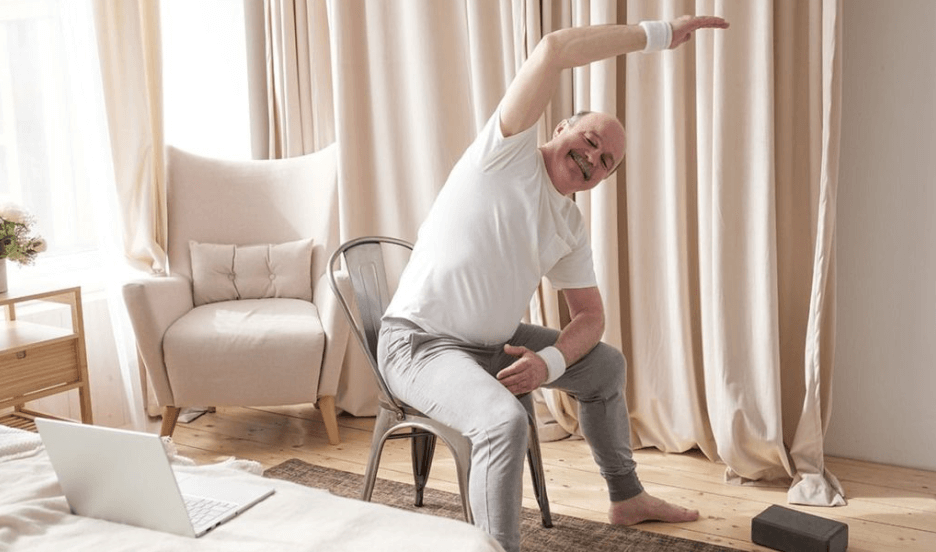
Chair Yoga Exercises for Improved Flexibility and Mobility
Chair yoga exercises offer a practical way for people of all ages and abilities to improve flexibility, strength, and posture without needing to leave their seats. This form of yoga adapts traditional poses to a seated position, making it accessible for seniors, those with limited mobility, or anyone looking for a gentler way to stretch and move. Chair yoga can enhance circulation, reduce stress, and support overall well-being through simple, low-impact movements.
These exercises can be done at home, in the office, or even while traveling, providing a convenient option for busy schedules or physical limitations. By focusing on breath and alignment, chair yoga helps improve mental clarity and body awareness without requiring extensive space or equipment.
Many chair yoga routines are designed to be short and manageable, making it easy to incorporate them into daily life. The variety of poses targets different muscle groups and encourages healthy movement patterns, which can alleviate discomfort and increase energy throughout the day.
Essential Chair Yoga Exercises
Chair yoga offers accessible movements that enhance flexibility, strength, and mobility without strain. Each exercise focuses on a specific area of the body, promoting better posture and spinal health while providing gentle conditioning.
Seated Cat-Cow Stretch
This stretch improves spinal flexibility and circulation. Seated upright, the practitioner inhales while arching the back and lifting the chest. The neck extends gently to open the throat area.
On the exhale, the spine rounds, and the chin tucks toward the chest, creating a stretch along the back. Repeating this 5 to 10 times helps reduce stiffness in the spine and increases breathing capacity. The movement should be slow and controlled, emphasizing breath coordination.
Chair Mountain Pose
A grounding posture focused on stability and posture alignment. Sitting tall with feet flat on the floor, the spine lengthens, shoulders relax, and hands rest on thighs.
Engaging the core stabilizes the torso while maintaining an upright head position balances the neck. This pose encourages improved posture, especially for those who spend long periods seated. Holding it for 30 seconds to a minute trains endurance and body awareness.
See also: Affordable and Flexible Life Insurance Plans by Sun Life
Seated Spinal Twist
This exercise improves spinal mobility and relieves tension in the back. While seated, twisting gently to one side, the hand closest to the back of the chair grips for support. The opposite hand rests on the outer thigh.
Twist slowly with an emphasis on lengthening the spine before rotating, avoiding any discomfort. Holding for 15 to 30 seconds each side encourages detoxification and reduces stiffness, benefiting digestion and circulation.
Chair Warrior Pose
A seated adaptation of the traditional Warrior, this pose builds leg strength and stability. One foot extends slightly forward while the other remains flat on the floor, hips square.
Arms extend overhead or out to the sides for balance, engaging the shoulders and core. Keeping the spine straight and chest lifted promotes balance and improves concentration. Holding this pose helps with endurance and strengthens lower body muscles safely.
Benefits and Safety Tips for Chair Yoga
Chair yoga offers a practical way to improve mobility, strength, and mental clarity without requiring standing poses or floor exercises. It is adaptable to many physical abilities and requires attention to safety to maximize its effectiveness.
Physical and Mental Health Benefits
Chair yoga can reduce joint pain and stiffness, particularly in the knees and hips, making it suitable for people with arthritis or limited lower body mobility. Regular practice improves flexibility, muscle strength, and circulation while lowering fatigue levels.
Mentally, chair yoga supports stress reduction and enhances focus through mindful breathing and gentle movements. It can improve mood and provide a calming effect, especially for seniors or those managing chronic health conditions.
These benefits come without the high impact or fall risk associated with traditional yoga, making chair yoga accessible and sustainable.
Modifications for Different Abilities
Chair yoga can be tailored for various mobility levels. For those with limited upper body strength, smaller range movements and slower transitions help avoid strain. Using armrests enhances balance and stability for beginners or those with balance issues.
For individuals with neck or back pain, poses focused on controlled spinal movements and supported stretches reduce discomfort. More advanced practitioners can incorporate light resistance bands or focus on breath control to increase challenge.
Adjustments ensure that each person can safely participate while addressing personal physical limitations or health concerns.
Safety Guidelines and Precautions
Proper chair selection is essential—sturdy chairs without wheels or arms are recommended to maintain balance. Participants should always sit with feet flat on the ground to maximize stability.
It is important to start slowly, especially for those new to exercise or with health conditions. Listening to the body and avoiding any sharp pain during movements prevents injury.
Consulting a healthcare provider before beginning chair yoga is advised, particularly for those with cardiovascular issues or severe joint problems. Avoid holding poses for too long, and keep movements fluid and controlled.



